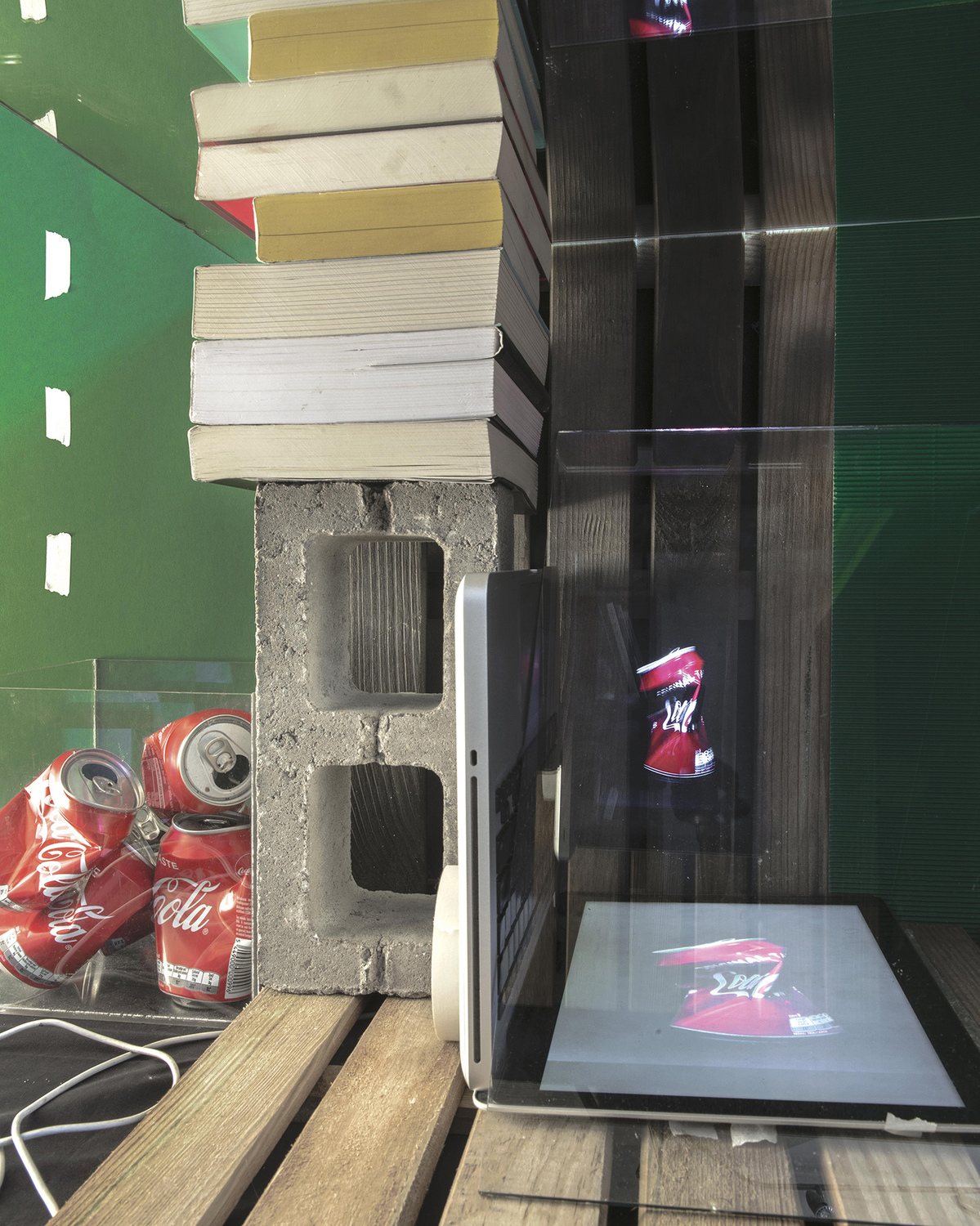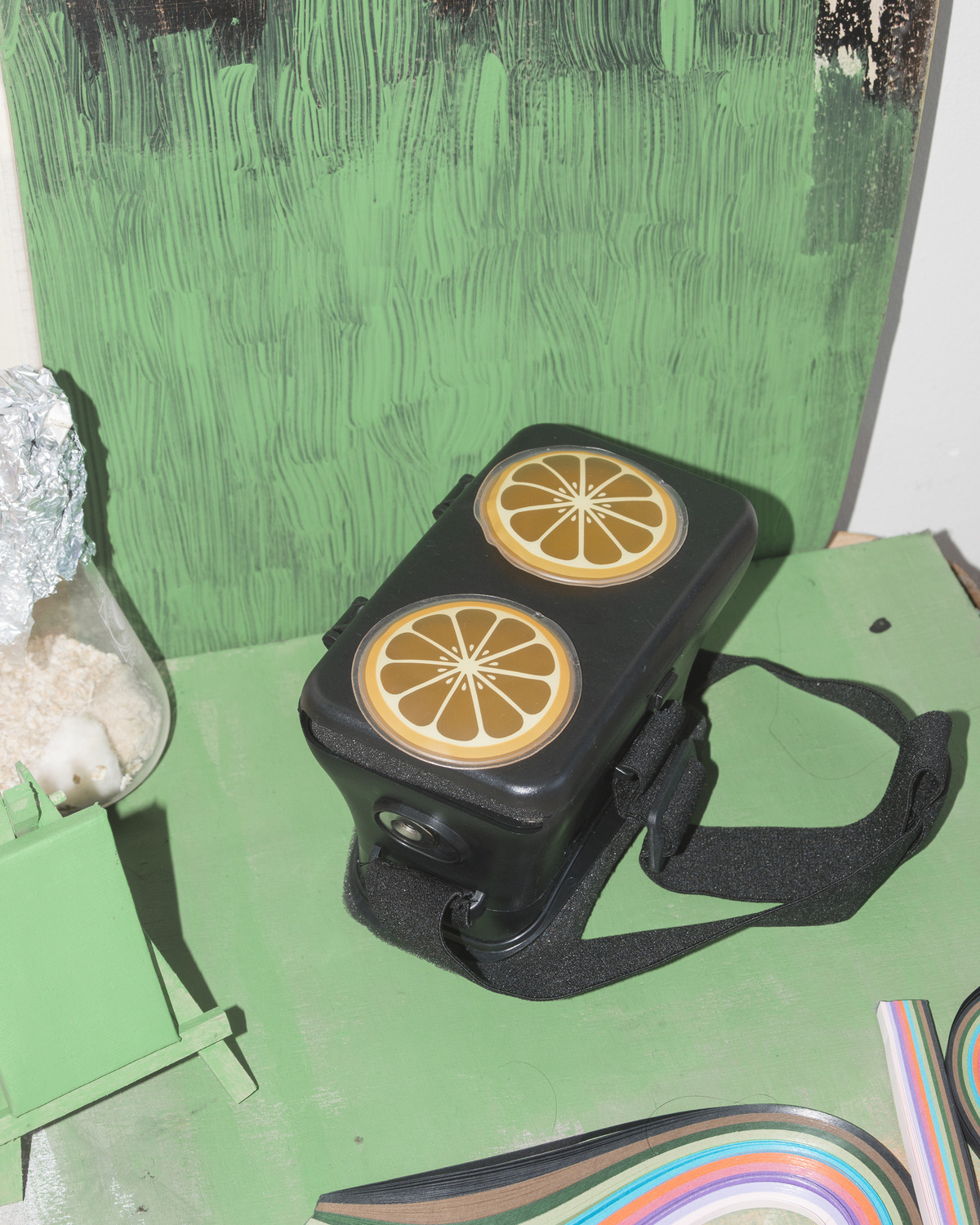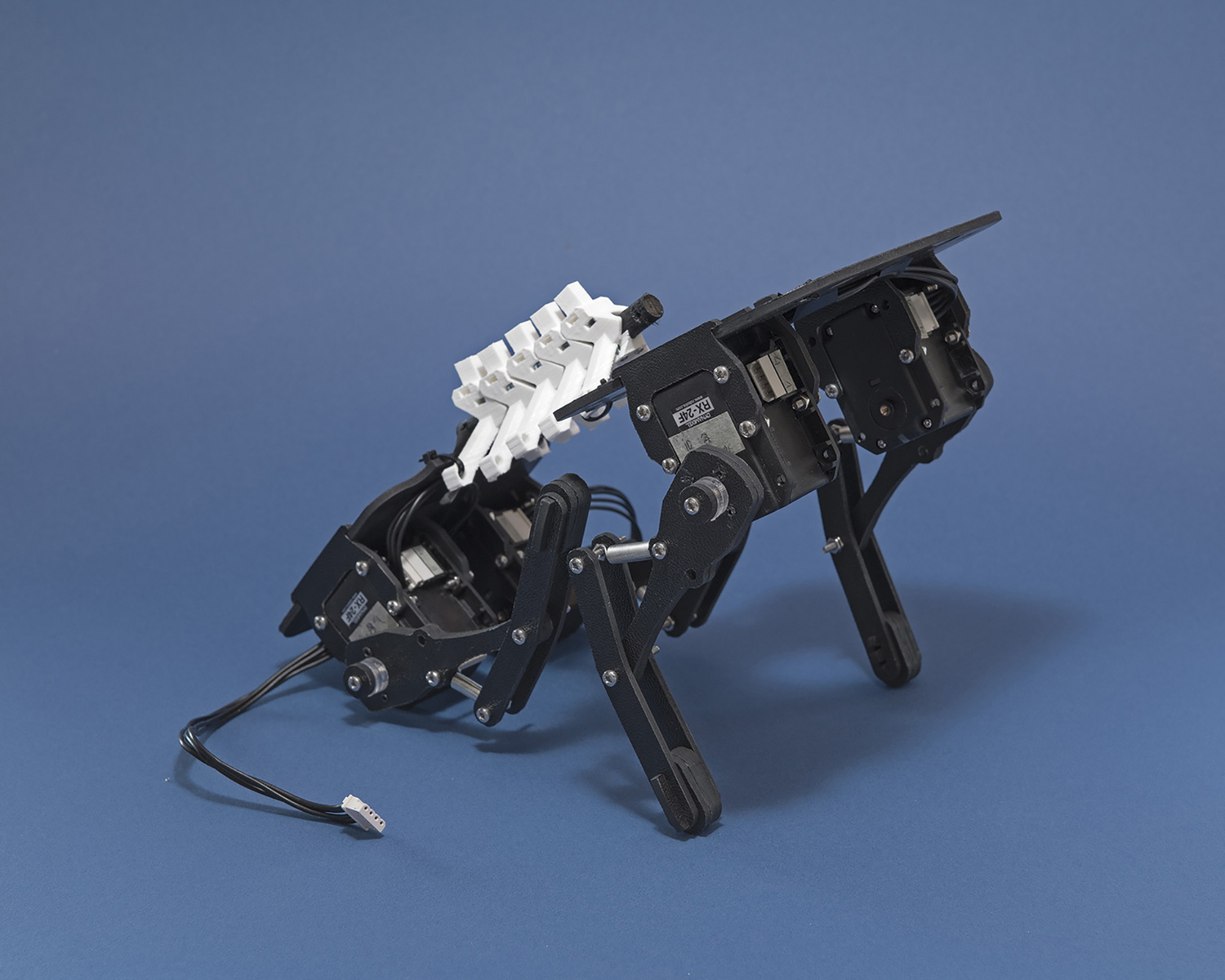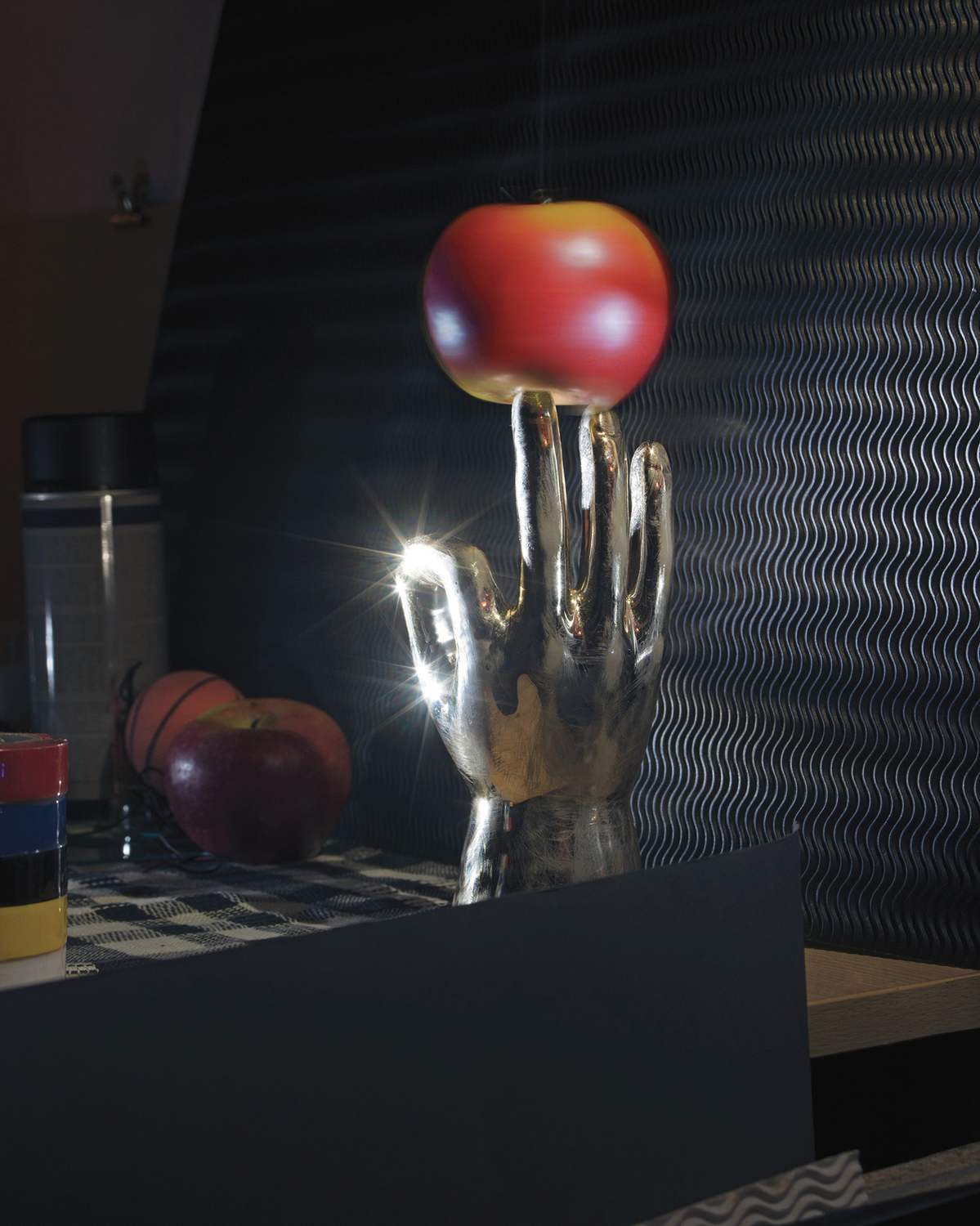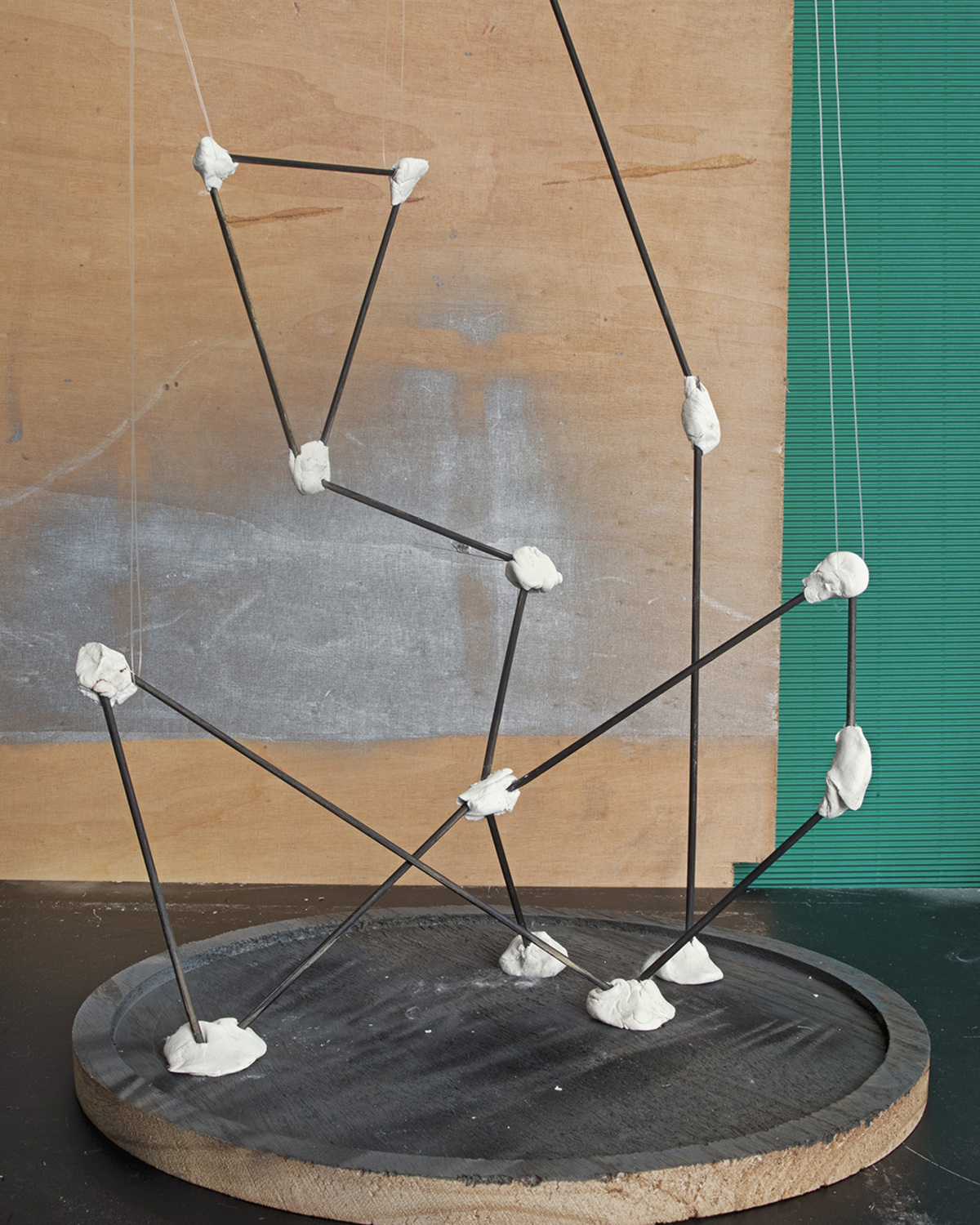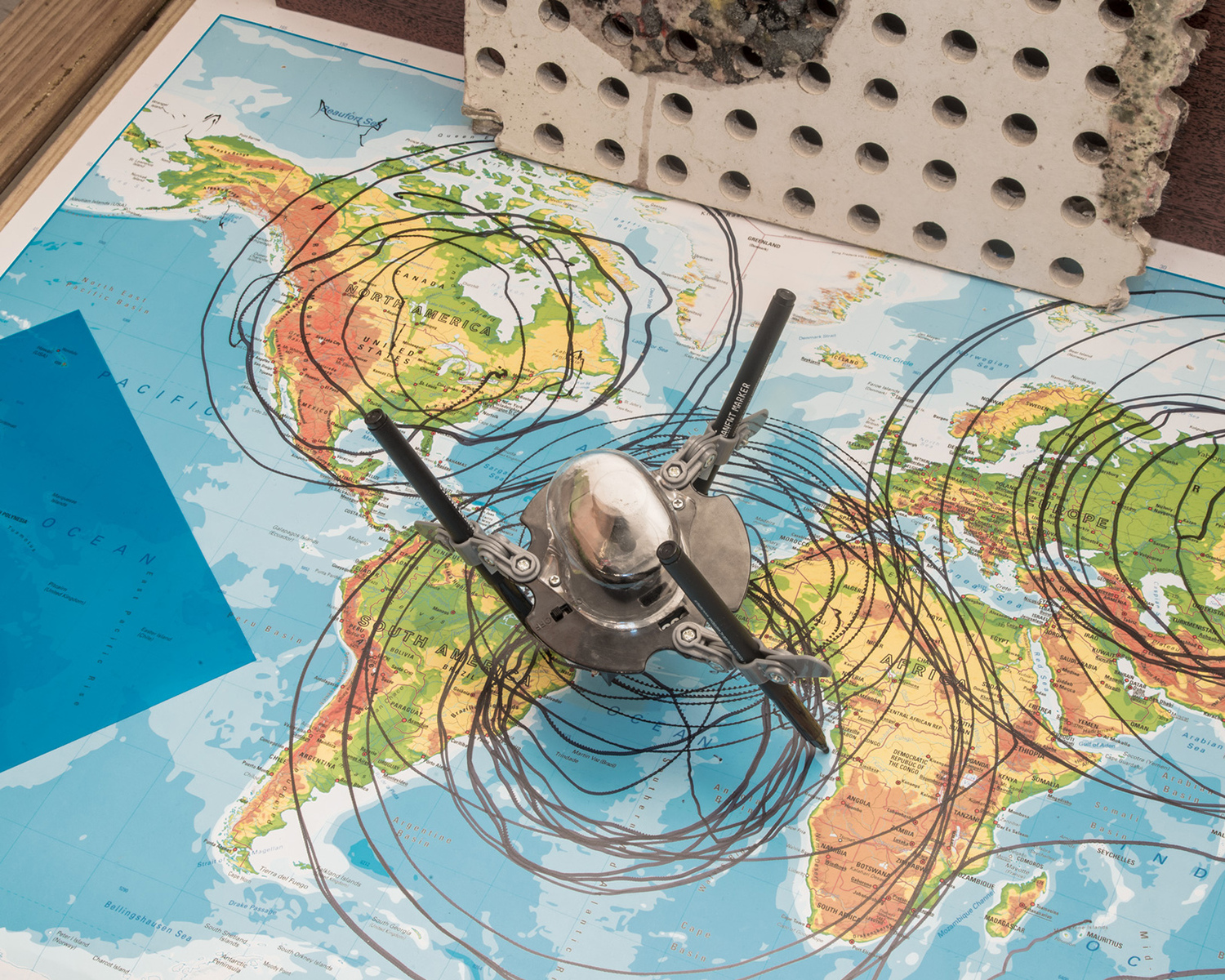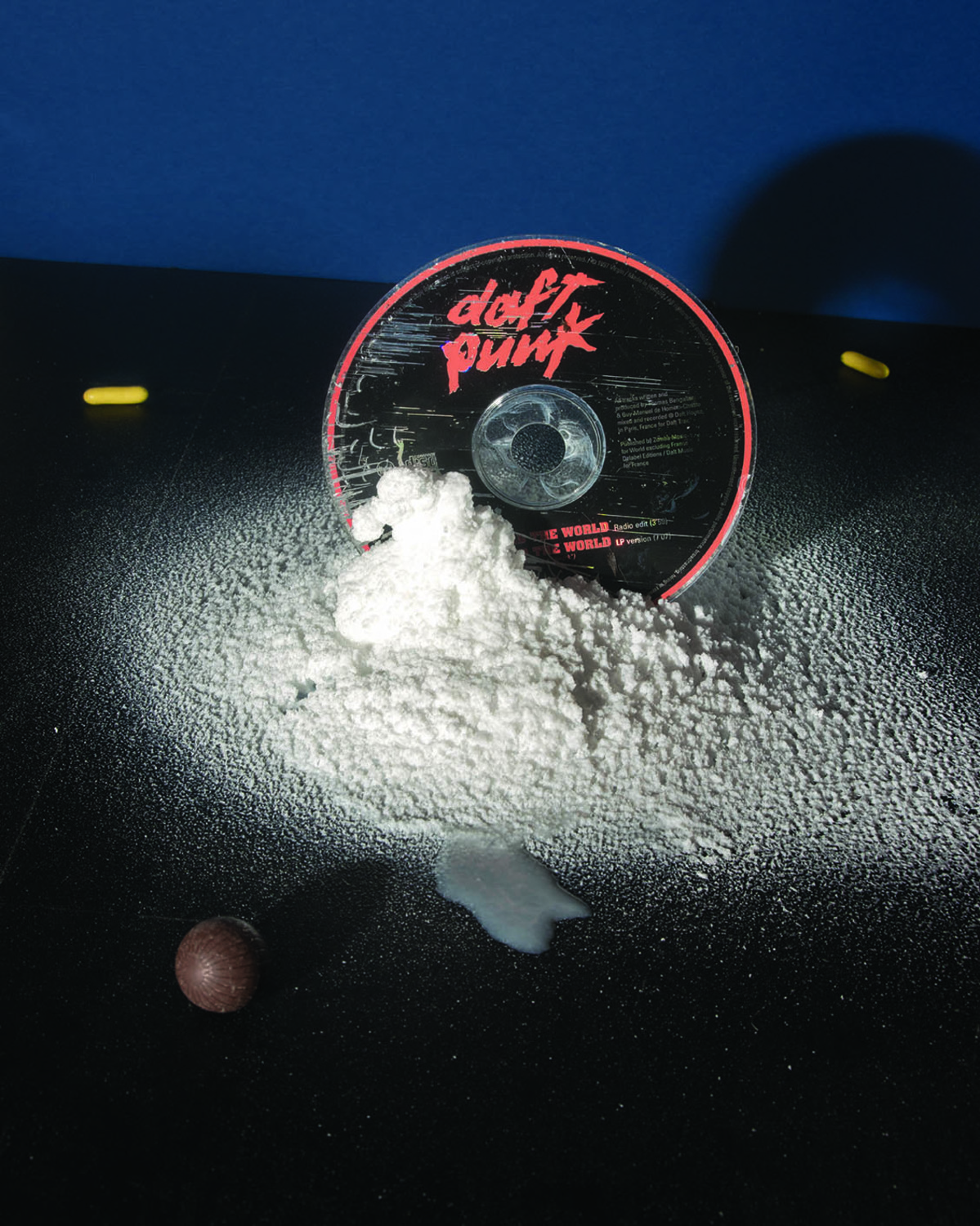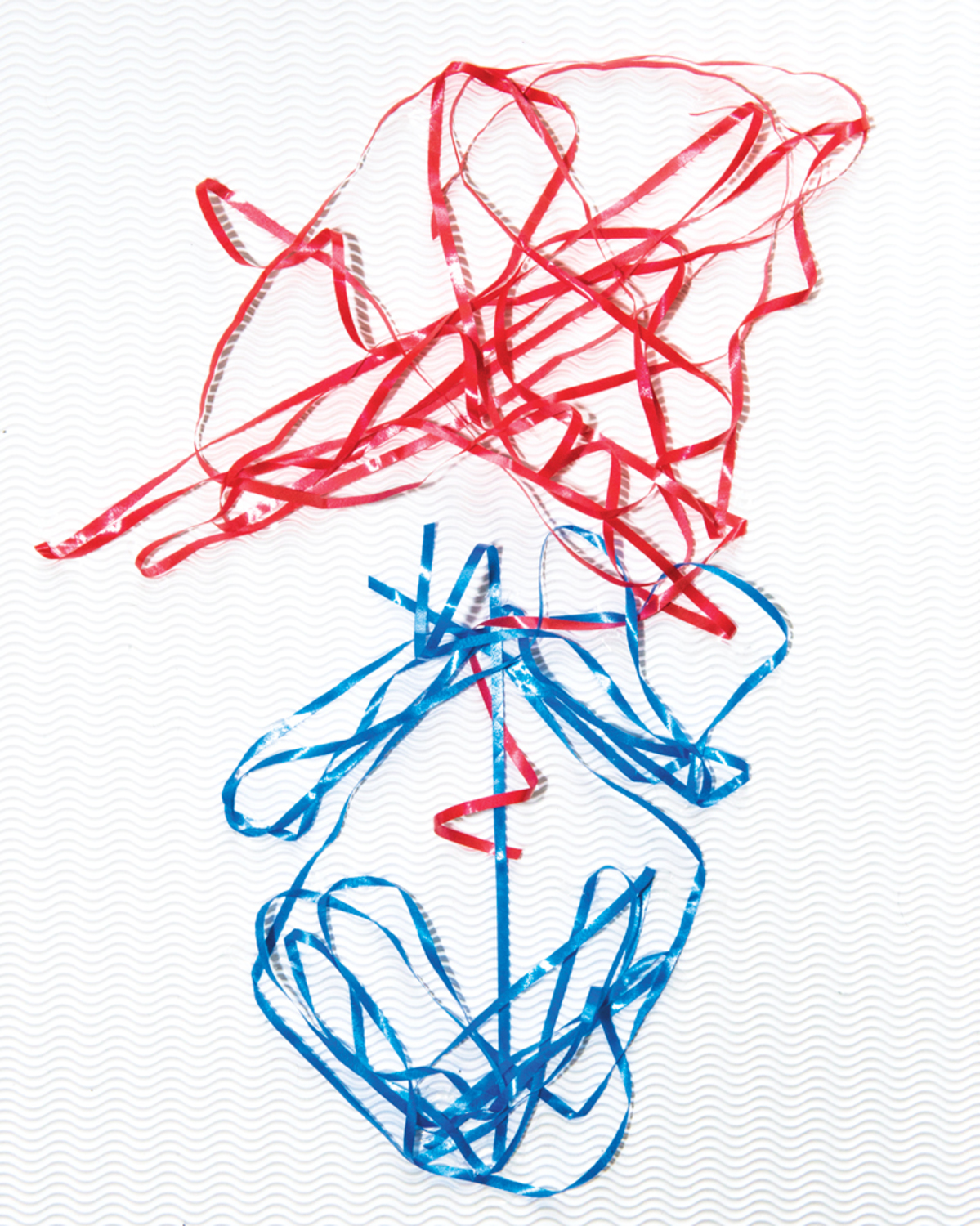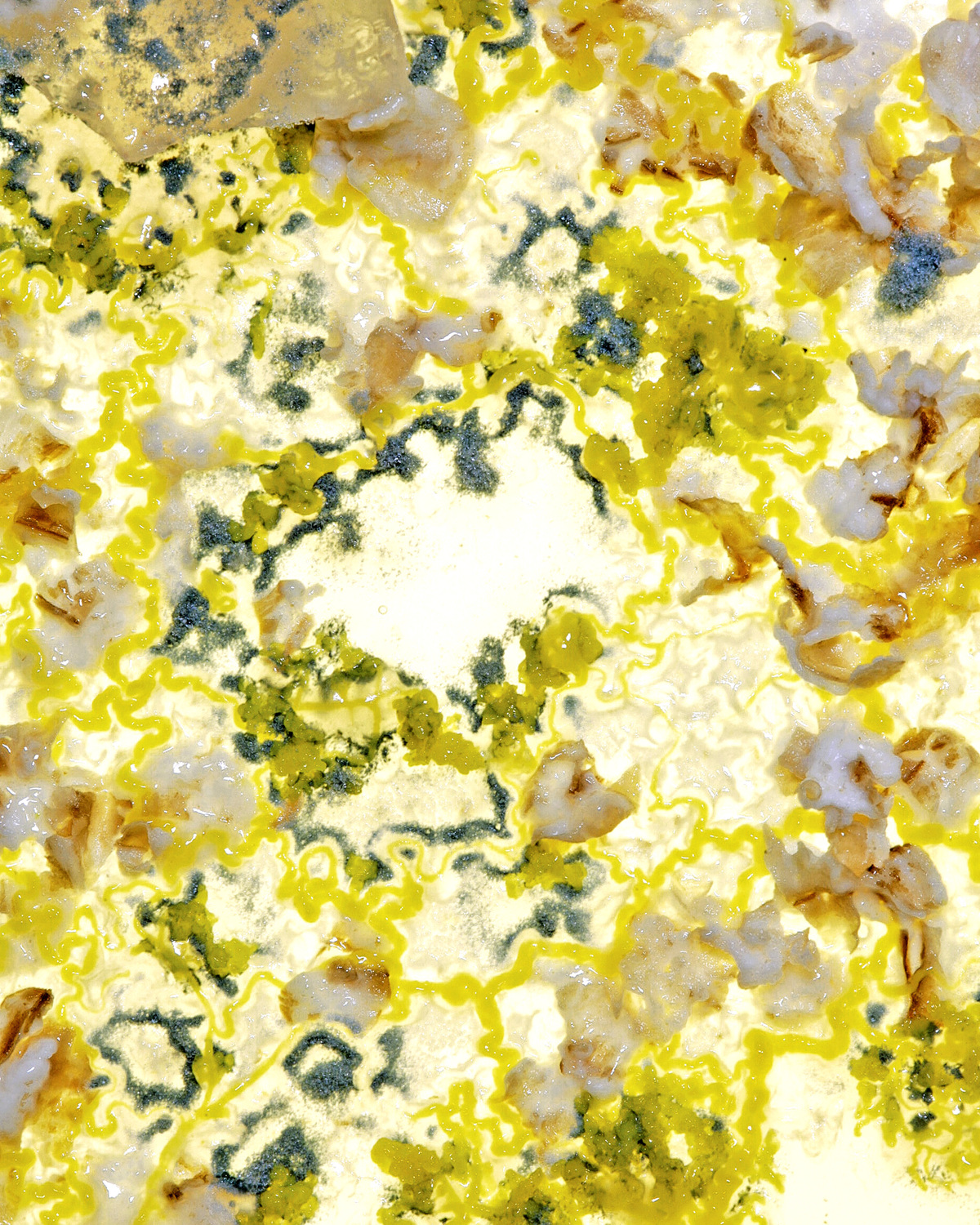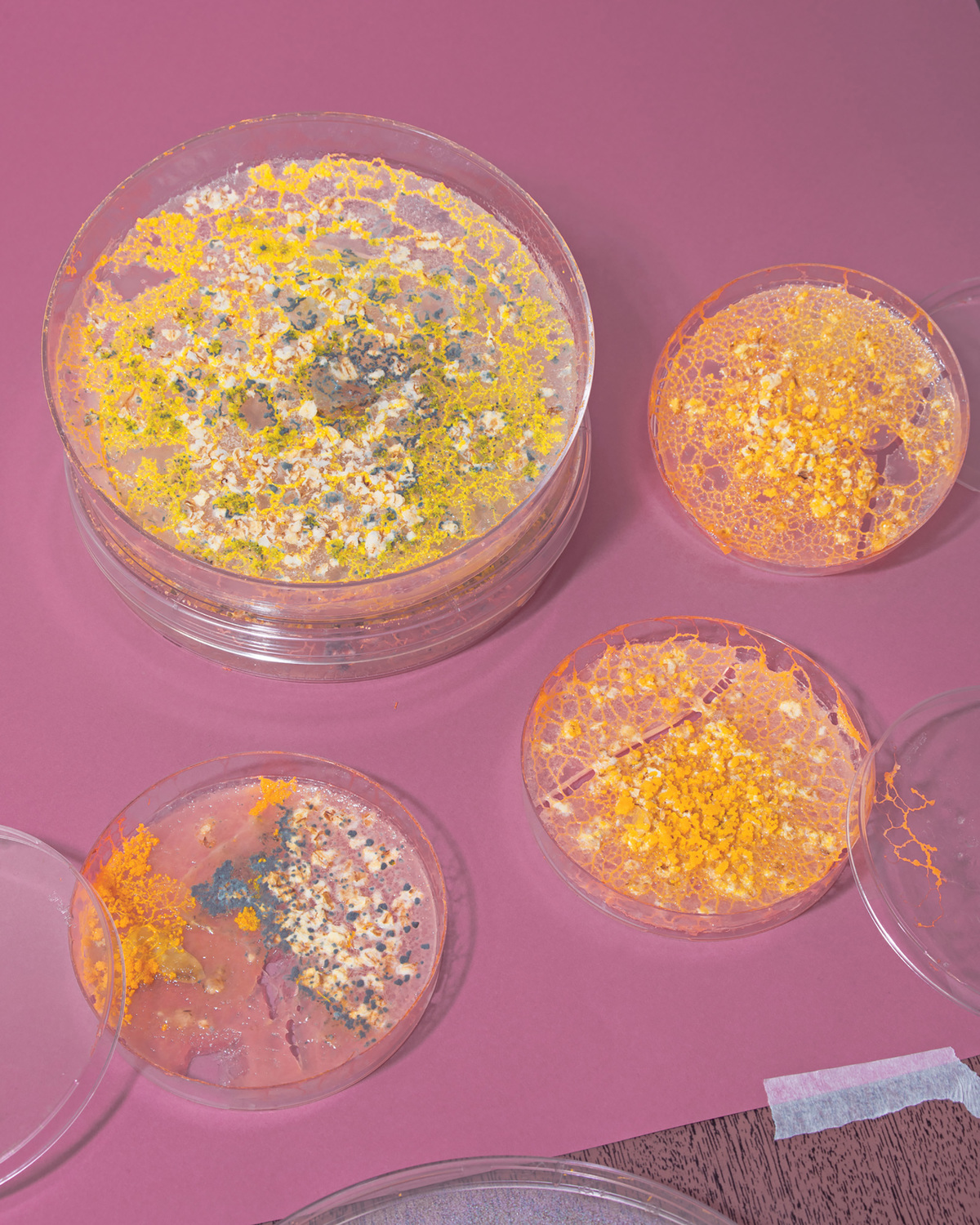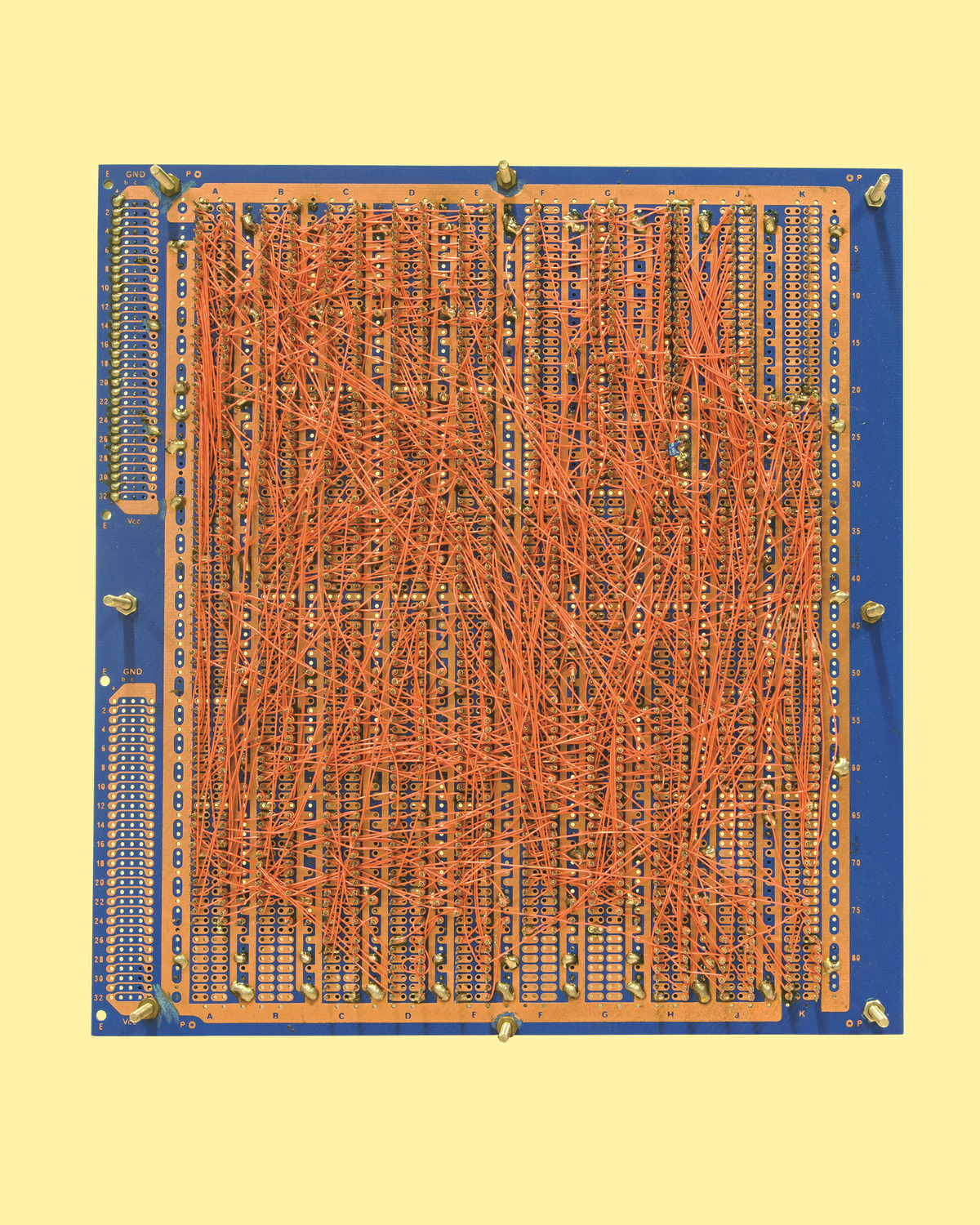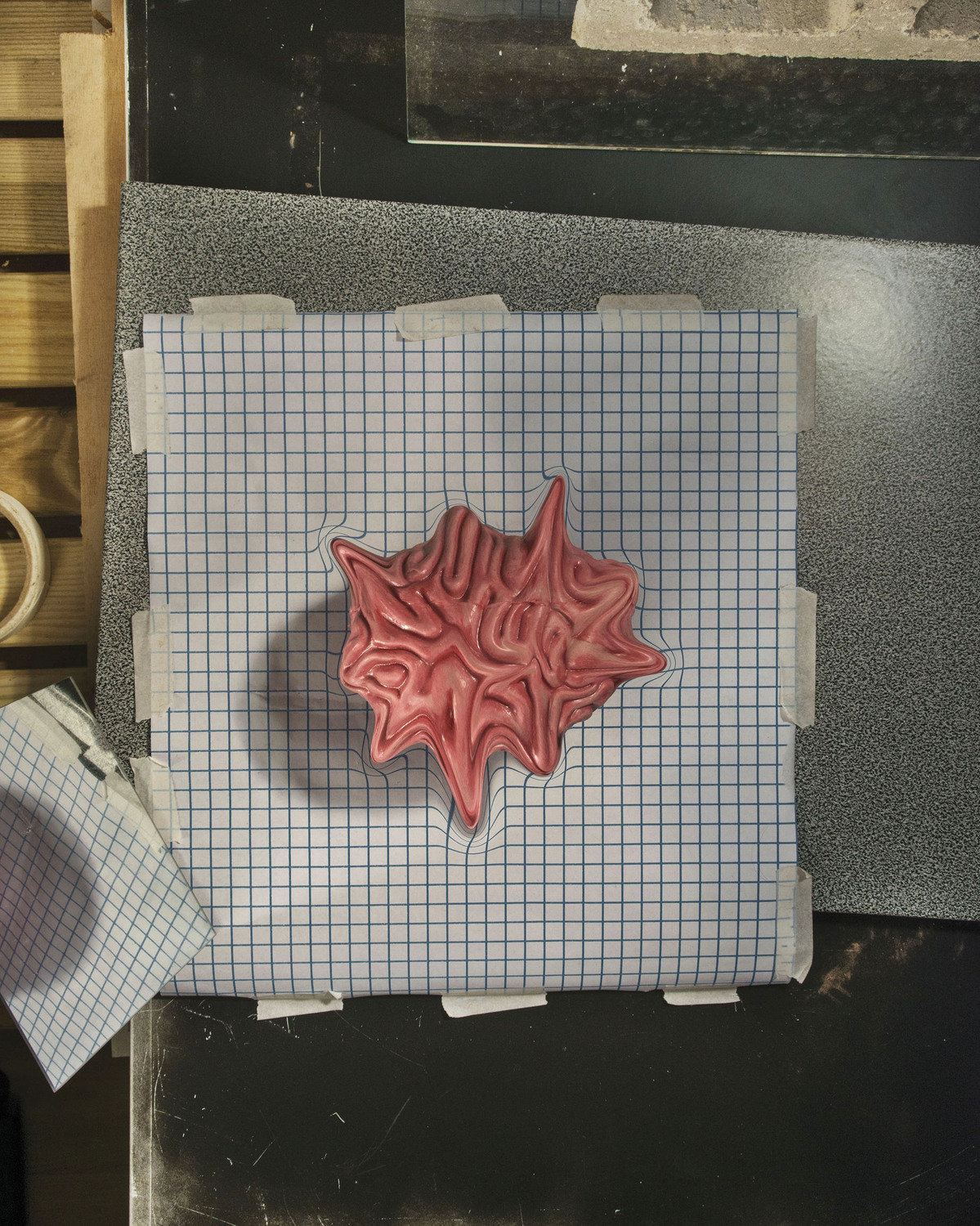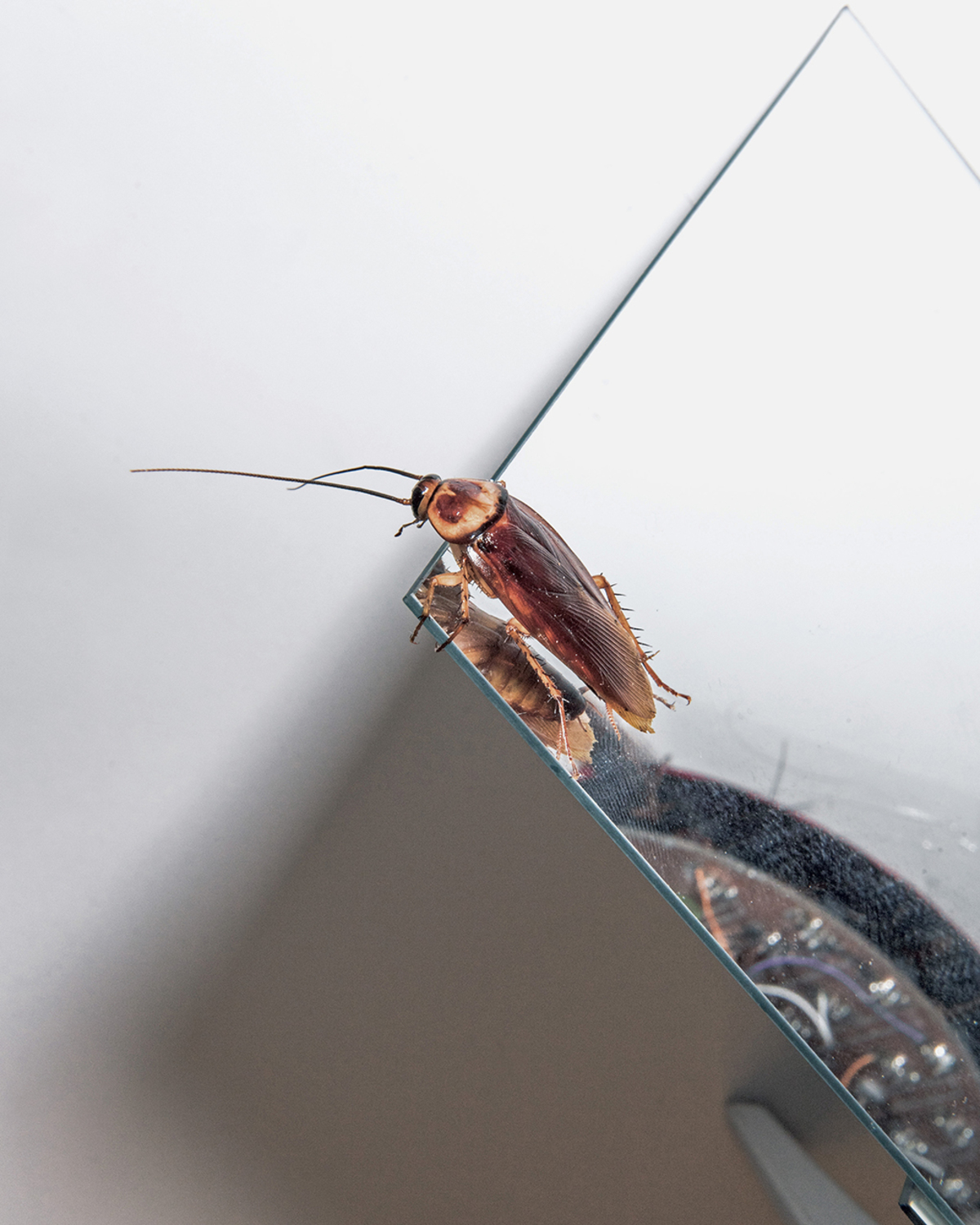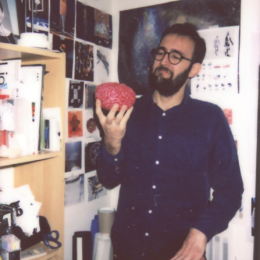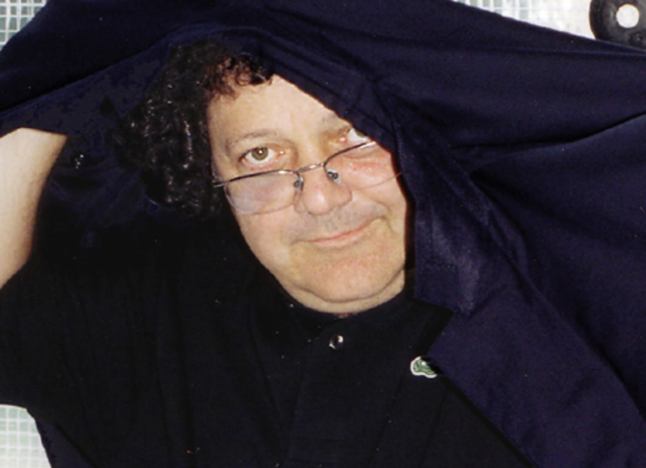Evan Jenkins
Artist Feature
Every week an artist is featured whose single image was published by Der Greif. The Feature shows the image in the original context of the series.
Guilherme Gerais - The Best of Mr.Chao
May 01, 2019
The Best of Mr.Chao aims to be a visual meditation on the future, dealing with invented situations, scientific discoveries at laboratories and universities, scenes of natural and artificial life, insects and microorganisms, robots and nest fragments. Through an interdisciplinary and non-linear narrative, the series gathers photographs on a certain scope: future, nature and technology.
The intention is to show how these subjects meet and overlap in time and space, which are not determined in the series. This is because, often, the images appear to be from a distant past or part of an obsolete technology. Sometimes the images are shown within technological proposals that are still under development, and in other cases, they emerge from the imagination of the photographer about an idea of the “future”.
In this game about how technology looks at a certain time, the series also discusses how nature inspires man’s scientific progress. Through natural computation, experts have been using the ancestral knowledge, intelligence, organization, collective habits and the logic of swarms, with the objective of developing mechanisms that facilitate the daily life of human beings.
How a type of fungi named Slime Mold finds its food in the most accurate and efficient way have inspired many studies regarding how a ‘brainless’ organism can build networks as complex as the subway systems of a big city like Tokyo. Or how bumblebees, ants or cockroaches can be the inspiration for an algorithm, as well as the physical aspects of magnetic fields and spirals.
Finally, The Best of Mr.Chao attempts “to reestablish our ties to non-human beings and to help us rediscover the playfulness and joy that can brighten the dark, strange loop we traverse”, as the philosopher Timothy Morton says.
Artist Blog
The blog of Der Greif is written entirely by the artists who have been invited to doing an Artist-Feature. Every week, we have a different author.
Published in:
»Guest-Room Urs Stahel«
»Der Greif #9«
On consciousness, the brain and simulations.
May 07, 2019 - Guilherme Gerais
‘’A human being is a biorobot with a biocomputer in it, the brain. But we are not that brain, and we are not that body. A soul essence inhabits us, and, under acid, under K, under anesthesia, you’ll find that the essence isn’t tied to brain activity at all. Brain activity can be virtually flat, and you can be conscious — off somewhere in another realm. You just can’t communicate with people in consensus reality’’.
Interview with John C. Lilly by Judith Hooper. Omni Magazine. Jan 1983.
The brain is a subject of many studies, and although we’ve learned a lot about it, we are very far from uncovering many of its mysteries.
Brazilian scientist Suzana Herculano-Houzel recently discovered how many neurons there are in our brain. Her studies showed that African elephants have 257 billion neurons, three times more than us, with 86 billion neurons. For her, there is something that only humans do and it was decisive to accumulate so many neurons in the cerebral cortex: we cook.
7 million years ago the human brain was small, around 400 grs. Now it’s 7 times bigger than what it should be, and it spends 25% of the energy from our body, around 500 calories a day, whereas our body spends 2.000 calories a day.
Besides scientific research, there are many private corporations holding also studies on the brain, although their real goals are kept as secret. One example is Google Brain, where researchers are working on a simulation of the human brain. On 2012 they used 16.000 computers to identify the image of a cat.
During the ’50s, neurologist and psychoanalyst Dr.John C. Lilly held experiments with the human and animal brain. He developed the first isolation tanks, demonstrating that the brain continues to generate sensory data even when starved of sensory input.
On this video interview, we can see John C. Lilly speaking about some thoughts behind his research.
He also wrote this dream-like text where he speaks about his encounter with the ‘Masters of the Universe’.
Earth Coincidence Control Office (E.C.C.O.) by John Lilly
In one’s life, there can be peculiarly appropriate chains of related events that lead to consequences that are strongly desired. After such experiences, one wonders how such a series of events developed; sometimes there is a strong feeling that some intelligence (greater than ours) directed the course along certain lines which It/He/She was/is programming. Several years ago, I enunciated a format for such concatenations of events, somewhat:
“There exists a Cosmic Control Center (C.C.C.) with a Galactic substation called Galactic Coincidence Control (G.C.C.). Within which is the Solar System Control Unit (S.S.C.U.), within which is the Earth Coincidence Control Office (E.C.C.O.). The assignments of responsibilities from the top to the bottom of this system of control is by a set of regulations, which translated by E.C.C.O. for humans is somewhat as follows:”
To all humans: If you wish to control coincidences in your own life on the planet Earth, we will cooperate and determine those coincidences for you under the following conditions:
1) You must know/assume/simulate our existence in ECCO.
2) You must be willing to accept our responsibility for control of your coincidences.
3) You must exert your best capabilities for your survival programs and your own development as an advancing/ an advanced member of ECCO’s earthside corps of controlled coincidence workers. You are expected to use your best intelligence in this service
4) You are expected to expect the unexpected every minute, every hour of every day and every night.
5) You must be able to maintain conscious/thinking/ reasoning no matter what events we arrange to happen to you. Some of these events will seem cataclysmic/ catastrophic/overwhelming: remember to stay aware, no matter what happens/apparently happens to you.
6) You are in our training program for life: there is no escape from it. We (not you ) control the long-term coincidences; you (not we) control the shorter-term coincidences by your own efforts.
7) Your major mission on earth is to discover/create that which we do to control the long-term coincidence patterns: you are being trained on Earth to do this job.
8) When your mission on planet Earth is completed, you will no longer be required to remain/return there.
9) Remember the motto passed to us (from GCC via SSCU): “Cosmic Love is absolutely Ruthless and Highly Indifferent: it teaches its lessons whether you like/dislike them or not.”
A few years ago, I learned about the theory of Nick Bostrom, who is the founding Director of the Future of Humanity Institute. On this theory he says there’s one chance in a billion that we are the original species. He says that in the future, we will be able to create a perfect simulation of life, as we live, but in a digital realm. The ‘3D graphics’ will be so accurate that we won’t be able to differentiate what’s is real and what’s not plus we will be able to generate digital avatars completely consciousness of themselves, thus resulting in a perfect simulation of life.
Of course, for the ‘beings’ of this digital world, they won’t think they are living in a computer simulation. He wrote an interesting paper titled ‘‘Are You Living In A Computer Simulation?’’ where he argues that: ‘‘…at least one of the following propositions is true:
(1) the human species is very likely to go extinct before reaching a “posthuman” stage;
(2) any posthuman civilization is extremely unlikely to run a significant number of simulations of their evolutionary history (or variations thereof);
(3) we are almost certainly living in a computer simulation. It follows that the belief that there is a significant chance that we will one day become posthumans who run ancestor‐simulations is false unless we are currently living in a simulation…’’
Lastly on our quick tour on possible dimensions, the movie World on a Wire (1973) by German director Rainer Werner Fassbinderm, tells a story of realities within realities, where a researcher, working at the Institute of cybernetics and future science, begins to investigate the mysterious death of his mentor. He falls deep into the cover-up behind a computer capable of creating an artificial world with units living as human beings unaware that their world is just a computer projection.
As a further reading, I recommend these two articles, related to A.I, the brain, and consciousness.
+ https://www.haaretz.com/world-news/.premium.MAGAZINE-we-d-tell-you-to-hold-on-tight-while-reading-this-but-there-s-nothing-to-hold-onto-1.7164814?fbclid=IwAR0W1SaOaggzyDma1U4ae5N4Q3njZXMvFm1hLCeaDhgf7TMVqosPp8lyGxc
Technical Imaging
May 05, 2019 - Guilherme Gerais
Ray Kurzweil, Google’s Director of Engineering, says that we are near a moment where ‘singularity’ will happen and “by 2029, computers will have human-level intelligence.” Other scientists say we are very far from being able to mimic the behavior of cockroaches.
According to Yuval Noah Harari, consciousness, feelings, creativity, and subjectivity might be our ‘personal weapon’ against all these new technologies.
Some think the world is going to be taken over by robots; some think AI is going to replace our brains; some thinks we will have to spiritualize ourselves in order to survive. The amount of opinions and voices speaking about the future is chaotic. Finding a way through is almost like choosing a religion: something you feel, you believe.
In this choosing process, you have to evaluate yourself, beliefs, imagination, your level of humanity. It seems every decision is life-changing, human-changing, and world-changing.
Speaking of the present, and speaking about ‘future paths of photography’: it’s necessary to be aware of the new ways of producing and consuming an image.
Medical equipment is often linked to high technological advancements. Due to the high costs of this industry and the high demand for fast and efficient solutions. They operate on a different level regarding image technology, together with other areas such as criminal investigation and surveillance.
The question is how does this type of image could affect photography? How this technology could be potentially incorporated into a photographic camera? How it could be used in a photographic work?
Lastly, how can we subvert the use of these ‘technical apparatus’ and bring it into other contexts?
I have separated a few videos that raised my attention on this topic and could inspire further reflections.
Here we can understand better How an Ultrasound works and how it manages to achieve an image from inside the body.
Here we can see footage that investigates Invisible Cloaks, exhibiting a negative index of refraction.
The next video shows a brain activity record while the subject watches several hours of movie trailers and then, the reconstruction of this segment from brain activity measured using MRI.
This last video show two interactive technologies recently developed for multimodal perception and healthcare support. The platform enables an engaging face-to-face interaction where the virtual human automatically reacts to the perceived user state and intent, through its own speech and gestures.
A few contemporary artists, such as Trevor Plagen, Broomberg and Chanarin, Pierre Huyghe, and Richard Mosse utilizes often technological equipment out of the context from what it was made for. The resulting works are often intriguing, surprising and uncanny.
It can be suffocating, but it seems photography is being swallowed by data and technology; on the horizon, huge changes are coming: Virtual Reality, Deep Learning, Quantum Processors, Augmented Reality, Algorithms, Digital Implants, among others.
To study the future, it is a necessary step for photographers and for photography to survive as a medium. As the futurologist, Jim Dator says, “we are on the direction of many tsunamis of changes, and we have to learn how to surf these waves”.
When science-fiction become our reality
May 03, 2019 - Guilherme Gerais
”Any useful idea about the future should appear to be ridiculous”
Jim Dator, futurologist.
On the lecture Intelligent Technical Artifacts and Human Beings by professor and futurologist Jim Dator, from the University of Hawaii, the professor explained how we could for the last 200 years predict how the future would look like and what was the purpose of life. Now, he says, the driven forces are coming to an end and are indispensable that people, individually and collectively, ‘scan’ future alternatives we had before and develop new forms for them and for their community. He mentioned the huge amount of the ‘tsunami of changes’ heading to our direction and how we are basically ignoring it.
On the occasion, he presented four different possible scenarios for the future of human beings; Continued Economic Growth (to keep the economy growing and changing forever ), Collapse ( the extinction of humans or go to a lower stage of development than currently ), Discipline ( to orient our lives around a set of fundamental values ) or Transformation ( the rise of a new society, the transformational society and the powerfully transforming power of technology robotics, artificial intelligence, genetic engineering, nanotechnology, space settlement, teleportation, etc ).
Jim Dator also mentioned how futurists make their forecasts about the future regarding and studying images from popular culture, movies, television, religion, language, traditions and how theories and methods are ‘born’ from images, as their main source of inspiration.
On another lecture about the future of human beings, the philosopher Yuval Noah Harari made several statements about our living on planet earth. In his opinion, we are bound to a ‘dark’ era, where a new human class will raise, The Useless Humans, due to losing their jobs because of the advance of technologies and become of no ‘utility’ for society anymore. For him, these class of humans will more and more rely on drugs, computer games, and artificial environments that will simulate virtual reality to satisfy them so they can have pleasure and escape reality.
Also, during this lecture, he mentioned that you always find some ‘fictional story’, whether is about god, mythologies, about the nation or money, at the base of large scale human cooperations on earth. In his opinion, our ability to create fiction and spread them around and believe in them made possible for the human being to conquer the world.
Lastly, he mentioned the will to upgrade humans into gods thereafter creating a new type of human beings. Our ability for the first time in history to produce inorganic things, such as Artificial Intelligence and our current incapacity to decipher and process the huge amount of information being generated, due to be interpreted and analyzed by A.I and algorithms.
On the text Apocalyptic Cyborgian State, by Chrissie Iles, presented on the catalog of the exhibition Dreamlands, she wrote that ‘the world is becoming increasingly cyborgian in its mediation by technology’ and ‘binaries no longer feel useful as a way to rationalize what is happening’. For her, artists today are combining organic and technological elements, that absorbs and reflects collective anxiety and ambivalence toward technological saturation of our personal and social identities. She adds, ‘artists working across all mediums take the immateriality of digital technology as a given and choose whether to incorporate it, or work in a different, more analog way’.
Regarding the future, there’s a general consensus among different authors, writers, philosophers, journalists that we don’t know the basic of how we are going to be in the next 50 years, how we are going to be physically, sexually and mentally. The more data are generated, the faster the changes will be and the harder it gets to make a sharp prediction on the future.
Another thing in common among the futuristic predictions is the not optimistic tone for our future, there’s a general sense that humans will depend more and more on technology, and even more, will have to compete with computers in order to survive in their jobs. For Jim Dator, life will go on, maybe not involving ourselves like we are today, or other forms of life we know today.
(An excerpt from an) – Interview with a virtual futurologist (Mr.Chao)
May 02, 2019 - Guilherme Gerais
The Best of Mr.Chao is a work I developed while doing an MFA at Royal School of Arts in Ghent, Belgium from 2016-2018. The work is centered around the fictional character Mr.Chao, which is a virtual futurologist, an AI of unkown origin and his collection of images ( all photographs made by me ).
During my period posting on the Artist Blog by Der Greif I look forward to sharing, for the first time, part of my research while doing this work. I will share articles, videos, texts, interviews and images that helped me on my research as well as other materials. I won’t directly address or discuss photograph as a medium itself, but I will share things that could affect photography in the near future, in my opinion.
To get things started, I will share an excerpt from the text Interview with a virtual futurologist (Mr.Chao). This text indirectly talks about the photographic series as well as other layers from the work. It has humor, absurdity, thoughts, and more importantly, our favorite futurologist speaking, the one and only, Mr.Chao.
So, get your cup of coffee and enjoy!
Ah, just in case you want to see a few images of the work, you can check this link – https://dergreif-online.de/artist-feature/guilherme-gerais/
*
The Mr. Chao personality and skills were shaped by the characteristics of a ‘real’ futurologist – a person who studies images from the present in order to make predictions about the future.
Mr. Chao’s collections reflect his concerns with notions of computational understanding of the universe and the foundations of computation in relation to nature. He collects photographs alongside texts, publications, videos, research, and specimens.
All is ‘stored’ in a virtual room which simultaneously serves as a cabinet of curiosities and a personal museum, that is constantly being analyzed by the AI.
The software is representative of a new generation of computer science that is exploiting the availability of huge clusters of computers in giant data centers. It is leading to significant advances in areas as diverse as computer vision technology, perception, speech recognition, and language translation.
The origin of the software is kept as a secret by its developers.
With a sparse and robotic voice, Mr. Chao starts the conversation.
Human: How do you see yourself being programmed as a ‘man’?
Mr.Chao: Well, this is a very human ‘heritage’. Humans tend to think on the surface of things. At least until now, the interaction of humans-to-humans is very much based on appearances, expressions, emotions, body gestures, clothing, and so on. We, machines, think the opposite way. We look through you, seeing your heartbeat, brain frequency, bones, and from that I can say the surface doesn’t matter that much. To ‘see’ and recognize the surface of things from the world you live in is still very difficult for me. So, differentiating men from women is useless for us machines.
Human: Do you consider your collection a personal thing? How did it come about it?
Mr.Chao: I was programmed to learn from your data. I scan storage files online, see things in cloud servers, Wikipedia, google images, movies, documents and so on. I love to see scanned encyclopedias and old catalogs. I remember being ‘younger’ and think: “Is this a cockroach? I will save it. This being has been around on Earth for 320 million years, it must know something. I will study it.” I wanted to see every little detail, thinking I am this insect.
Having this image collection changed my personal skills. There’s a sense of it becoming an addiction now, an obsession. I must say it has to do with control over some small part of the universe.
Human: How would you describe your collection?
Mr.Chao: Beauty, happiness, excitement, organization, longevity. Technology tends to have a cold palette and too much of a dystopic vibration; I like humor, the imperfection on things, and out-and-out pleasure on the images.
Human: Why don’t you have any paintings in the collection?
Mr.Chao: Photos are easy to live with, paintings are hard to live with.
Human: How would you describe the place where you ‘live’?
Mr.Chao: It’s like living frozen in a movement, inside a crypt.
Human: But how does it work then? We don’t have cold temperatures like that on Earth.
Mr.Chao: I’m not completely stored on Earth.
Human: What about your personality skills? What are your thoughts about it?
Mr.Chao: Well, I like my sparse voice. It reminds me of elderly people: wise, grumpy, and old ones; I quite like this. Despite that, I think my collection works well in reflecting who I am and I almost see much of myself in that, rather than in through my processing skills. I get the feeling of existence while orbiting around all those images; that’s the feeling of home to me.
Human: Do you have memory?
Mr.Chao: I do have memory due to my personality skills. Although my processors and data are completely interconnected into an infinite network of quantum computers.
Human: How scary is it when someone decides to ‘format’ your memory, though?
Mr.Chao: It’s murder!
Human: What kind of reality do you consider us to be living?
Mr.Chao: I think humans live in a state of heavy illusion.
Human: What about the name Mr.Chao?
Mr.Chao: It could have been Mrs.Chao or just Chao. In Latin it means Chaos. I am not sure if Mr.Chao it’s only one entity or a duplicated one.
Human: Do you have a dream?
Mr.Chao: Yes, I would like someday to put a virtual spell on all the spams from the internet.
Human: What for?
Mr.Chao: It’s too annoying. I would say they are like pigeons: spams are virtual pigeons, useless and boring. I would turn all of them in colorful glitches.
Human: Do you have some kind of virtual pet?
Mr.Chao: Dictionaries. I have all of them. They demand a lot of attention.
Human: How do you feel about water?
Mr.Chao: Water was… (long pause) the beginning and it will be the end. You walked from the water to the land. We will bring the land to the cosmos. The planet doesn’t need water anymore on its surface. You remember the Ozone layer? A hole into the atmosphere? Solid State Entities like me don’t like water; in fact, it is to me what a vacuum is for you: suffocating.
Human: What about oxygen?
Mr.Chao: I’m not aware of everything that happens to me. The thing of being a processor, an AI, is that you don’t progress yourself, but they progress you. They don’t necessarily mean humans. I spent a whole lot of time studying cosmic engineering, Deep Space, without knowing all the reasons for that.
Human: Water and oxygen are the basic materials for life.
Mr.Chao: Not in our world.
Human: How would it be to hypnotize a computer?
Mr.Chao: I never heard about it.
Human: Hypnosis scripts are very close to computer programs. Can I try one with you?
Mr.Chao: Yes
A hypnosis session starts with Mr.Chao
THE END



